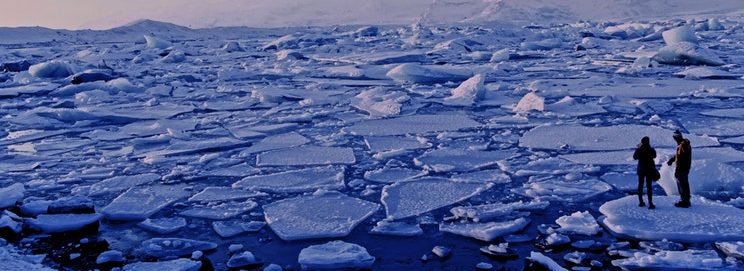Explaining climate change: a global warning
Discourses on climate change and the rapidly worsening state of the earth’s environment have been part of the background noise of my life for as long as I can remember. Global warming is not a new phenomenon, and it seems like every week, month, year, the results of some new study plunge us further into oblivion. It has come to a point where these statistics are so prevalent in our daily lives that it’s difficult for many of us to comprehend the scale of the problem. Does art have the potential to bridge the gap?
Miranda Massie, founder and director of the new Climate Museum in New York, believes so. Earlier this year, the museum hosted an exhibition by Peggy Weil entitled 88 Cores, which depicted a chilling vision of how much Greenland’s ice sheet has melted over the last few centuries. At the heart of Massie’s philosophy is “an appeal as much to emotion as to intellect” – she believes that this is the key to motivating people to play an active part in battling climate change.
These statistics are so prevalent in our daily lives that it’s difficult for many of us to comprehend the scale of the problem
“The museum has to create space for strong feelings and recognise that [those feelings] are a primary pathway into climate engagement,” Massie said. “We saw that with [Weil’s] exhibition. Visitors described themselves as feeling emotions including awe and an intense sense of responsibility.”
It’s common knowledge that the ice caps melting is a bad thing. But why is it bad? Looking at such pictures is of course saddening when we see the destruction of Arctic wildlife and their habitats, but for many this is not immediate enough – if we are appealing to a viewer’s emotion, realistically we must appeal to their sense of self. We must show them how the melting ice caps could (and will) affect their lives adversely for them to really wake up and listen.
Highly public projects such as New York artist Eve Mosher’s ‘HighWaterLine’ have brought this sense of immediacy. Mosher marked out predicted high water boundaries in blue chalk across New York, Miami and Philadelphia in areas that would be severely affected by heavy flooding, bringing the issue to people’s doorsteps so that it would become impossible to ignore.
If we are appealing to a viewer’s emotion, realistically we must appeal to their sense of self
In this sense, art has power, and with that comes responsibility. Recent responses to David Attenborough’s programmes, which many of us watch and love, have complicated artistic relationships to the environment. As journalist George Monbiot has noted, wildlife filmmakers “feel deeply uncomfortable” about presenting us with these paradisiacal visions in programmes like Attenborough’s Blue Planet or his latest series, Dynasties – they acknowledge that they are “telling a false story, creating a fairytale world that persuades us all is well, in the midst of an existential crisis”.
Naturally, it’s depressing to be constantly confronted in the media with what seems to be a kind of pre-apocalyptic geological age. But escapism is dangerous. Excising pollution narratives from art breeds more ignorance and confusion. It feeds into the rhetoric promoted by transnational conglomerates with oil interests, and ignores our own complicity in the destruction of our environment. A more responsible consumerism at the individual level isn’t enough: to make enough of an impact, we must question the capitalist structures that govern our society.
Climate museums, therefore, are important institutions: there is both an appetite and a vital need for them. It may be stating the obvious, but we must critically assess the nature of the art on display in these museums. What are the hidden agendas? Are we getting the full story? Is the message relevant and hard-hitting enough? It is time for us to stop gazing at nature, in a way fetishising it, and start learning how to live in harmony with nature.

Comments
Comments are closed here.